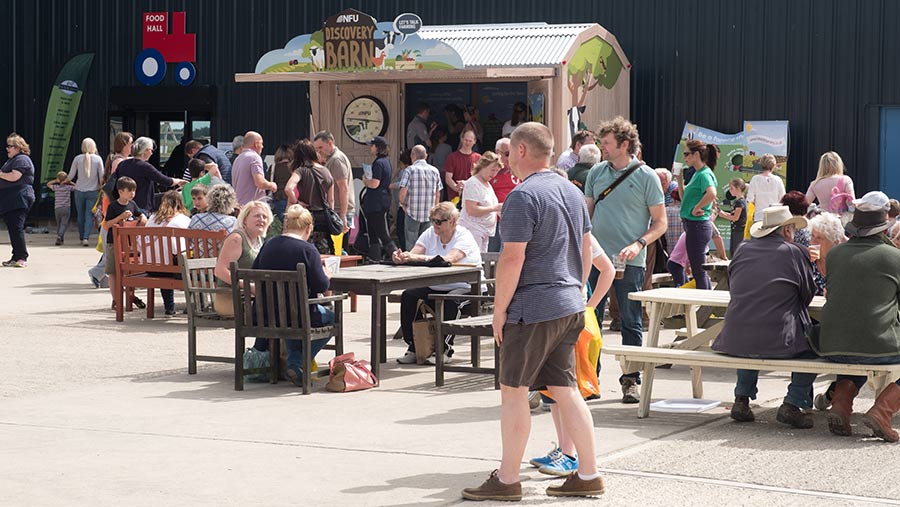Rural tourism and leisure: How to expand and attract customers
 © Tim Scrivener
© Tim Scrivener Diversification usually allows farmers more control over the prices they charge for goods and services than they have over farmgate values for produce.
Farm income from diversification is steadily rising, says Savills’ Rural Tourism and Leisure report.
However, the internet and changing customer expectations are influencing what is offered, while also providing new opportunities, so tourism and leisure businesses, including retail, need to keep up with changing trends in attitudes and interests.
See also: Practical tips on planning applications when diversifying land
Internet searches
Google searches for certain keywords linked to rural activities have risen since 2019, with the exception of bed and breakfast.
Searches for farm shops have seen huge growth of 54% since 2019, attributed mainly to Covid-19 concerns and interest.
Searches of this type have slowed, but have still grown by 6% so far this year compared with those in 2022.
While farm diversification can build business resilience, existing rural tourism and leisure businesses need to look at adding to what they already offer with new events, experiences or attractions, says the report.
To do this successfully, they need to be aware of those themes driving consumer demand.
“The dominant macro themes of sustainable living, wellbeing and experience over possessions continue to impact customer decisions,” says the report.
Examples of this include making a traditional diversification such as a farm shop into a visitor destination, adding a new feature to attract a wider customer base.
This might be an extension into a new area of produce, other goods, or adding a novel attraction, event or experience.
“Ultimately, it will depend on the type of business, its location and target market,” says the report, “but expansion can be achieved in a variety of ways.”
Suggestions to help create or expand a visitor destination
- Collaborate with local businesses to widen the scope of an attraction. For example, milkshakes sold through a vending machine using locally produced milk.
- Seasonal attractions and experiences. These can add appeal and income – for example, pick-your-own pumpkins, guided walks, wildflower meadow visits, Christmas trees and wreath-making.
- Additional features – for example, offering customers somewhere to walk their dog, picnic or play free of charge can increase footfall to the main attraction. Charging points for electric vehicles have extended the length of customer visits to many farm attractions.
- Offer an experience. Ideas include providing an experience through guided nature walks, cookery lessons or crazy golf.
- The story – a farm or estate’s cultural heritage and history can be extremely powerful in creating further interest and can help develop brand and business loyalty.
- Add a point of difference. Quirky accommodation and a unique or unusual activity, service or product can improve competitive advantage.
Marketing and planning
When looking for routes to market, consider alternative places to market the product or service, the report suggests.
Broadening the product or service outlets can increase exposure, for example, by attending festivals and other events to extend your reach. Further advice includes:
- Develop a digital presence. Online retailing presents opportunities for the business to learn more about their customers and improve communication.
- Offer a delivery service. If appropriate, a delivery service can introduce new customers to the business and widen the reach.
- Tailor opening hours. Break away from traditional opening hours to create a wider customer base and even reduce costs.
Diversification success is strongly dependent on the time spent researching, planning and evaluating opportunities and plans.
When expanding, this includes, among other aspects, identifying the target market, knowing and understanding the competition and having a unique selling point.
Having, training for or recruiting the skills to cope with the expansion is also important, alongside assessing how the change might fit with local plans for the area, including nature protection.
The grant and other funding sources need to be researched and assessed, along with the tax implications of the proposed change, especially with regard to capital tax angles and business structures, which may also need legal input.
Infrastructure includes accessibility and sustainability – are there opportunities to build renewable energy into the plans to improve the efficiency and sustainability of the project?
Robust budgeting, profit and loss forecasts are essential, as is understanding how to promote the business.
An expansion may bring new or enhanced insurance and business risks. It may also bring the enterprise into the scope of business rates so this must be assessed and where necessary, allowed for in budgets.
Farm shops study
Savills researched 50 UK farm shops of all sizes, reviewing and categorising the activities and attractions offered, using websites and open source data.
It found that many are expanding their offer by adding further activities and attractions, encouraging repeat visits, longer stays and higher spends. New ideas and activities may also attract a wider customer base.
All of the farm shops analysed had additional activities and attractions, across a wide range.
Across the sample, 26% offered a delivery service, ranging from 22% of small shops to 30% of large shops.
Cost of UK accommodation a barrier
Almost half of potential domestic tourists indicated the cost of accommodation will be the main financial barrier to booking a break in the UK in the next six months.
One-third suggested they will seek cheaper accommodation.
Source: VisitBritain
